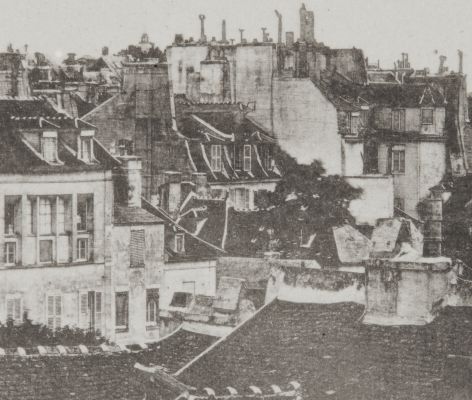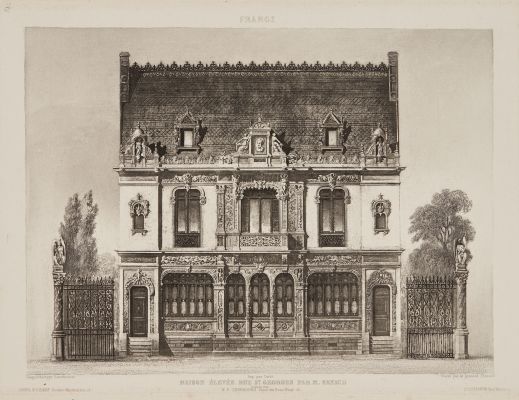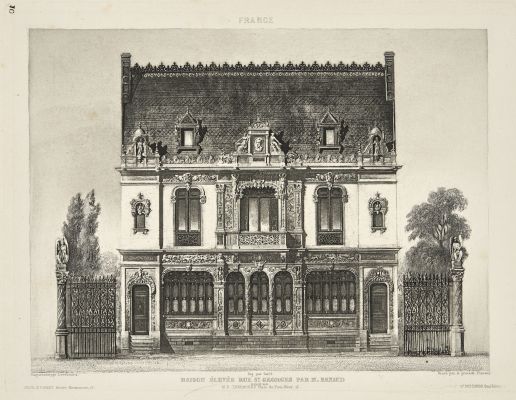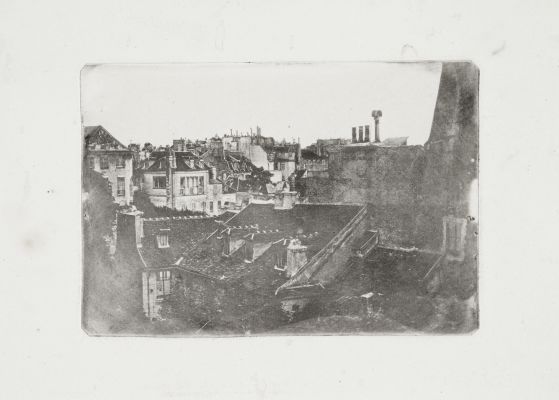![[Rooftops, Paris] Fizeau, Louis Armand Hippolyte (French, 1819-1896)](https://res.cloudinary.com/markkatzman/image/upload/c_scale,dpr_auto,q_auto:good,w_500/v1/master/Fizeau_06.jpg)
Title
[Rooftops, Paris]Artist
Fizeau, Louis Armand Hippolyte (French, 1819-1896)Key FigureDate
1841Process
DaguerreotypeAtelier
Fizeau, Louis Armand HippolyteImage Size
7.5 x 4.8 cm
The French physicist Armand Hippolyte Louis Fizeau, perhaps best known for measuring the speed of light, was also at the center of a group of early photographic experimenters who attempted to reproduce the unique daguerreotype in ink by transforming the silvered copper plate into a printable, etched matrix. Fizeau worked with various engravers to develop his process, including Johan Hurlimann, Augustin-François Lemaître, and Louis-Henri Brévière. Brévière, a printer for the Imprimerie royale, is linked to Fizeau through a group of daguerreotypes and associated prints that were likely made at Fizeau’s residence at 17, rue du Cherche-Midi in Paris. This daguerreotype view over the neighboring rooftops is one of many related images that display traces of the chemical and physical experiments that ultimately resulted in the creation of an electroplated and engraved daguerreotype from which impressions were printed on paper. [1]
Of all methods of the mechanical reproduction of daguerreotypes, the one developed by Hippolyte Fizeau around 1843 enjoyed the greatest recognition, becoming known in history as procédé Fizeau. This was basically a combination of several methods involving etching with acid, galvanic plating and traditional graphic procedures, occasionally necessitating the manual interventions in the picture that were supposed to be avoided by these technologies. The daguerreotype plate was first etched with an acidic solution composed of nitric, nitrous and hydrochloric acids. In the next phase, linen oil was rubbed into the etched sections; that is, the parts where the naked silver layer remained. Upon drying, the whole area was galvanically gilded, whereas gold only remained in places not protected by the oil. It was then necessary to clean the plate with lye which removed the oil layer, and the whole plate was subsequently covered – like with aquatint – in a grain of resin and finally etched again. Before printing, it was possible to make the relief firmer by immersing it in a galvanic bath, or to make an electrotype copy. These efforts resulted in an intaglio matrix, relatively firm, with a fine irregular grid enabling the printing of a scale of halftones much wider than in other existing photomechanical printing processes. Fizeau relied on the assistance of experienced graphic artists, namely Johann Hürlimann specializing in aquatint; lithographer Augustin François Lemâıtre; the optician, photographer and publisher Noël P. Lerebours; and Louis Henri Bréviere, director of the royal printing office. [2]
References
[1] MET cited 1/23/23 ://www.metmuseum.org/art/collection/search/773518
[2] Petra Trnkova (2021) "Electrifying Daguerreotypes: On Correlations Between Electricity and Photography around 1840", History of Photography, 45:2, 111-127, DOI:
10.1080/03087298.2022.2062907





![[Rooftops, Paris]](https://res.cloudinary.com/markkatzman/image/upload/c_scale,h_400/v1/master/Fizeau_07.jpg)




